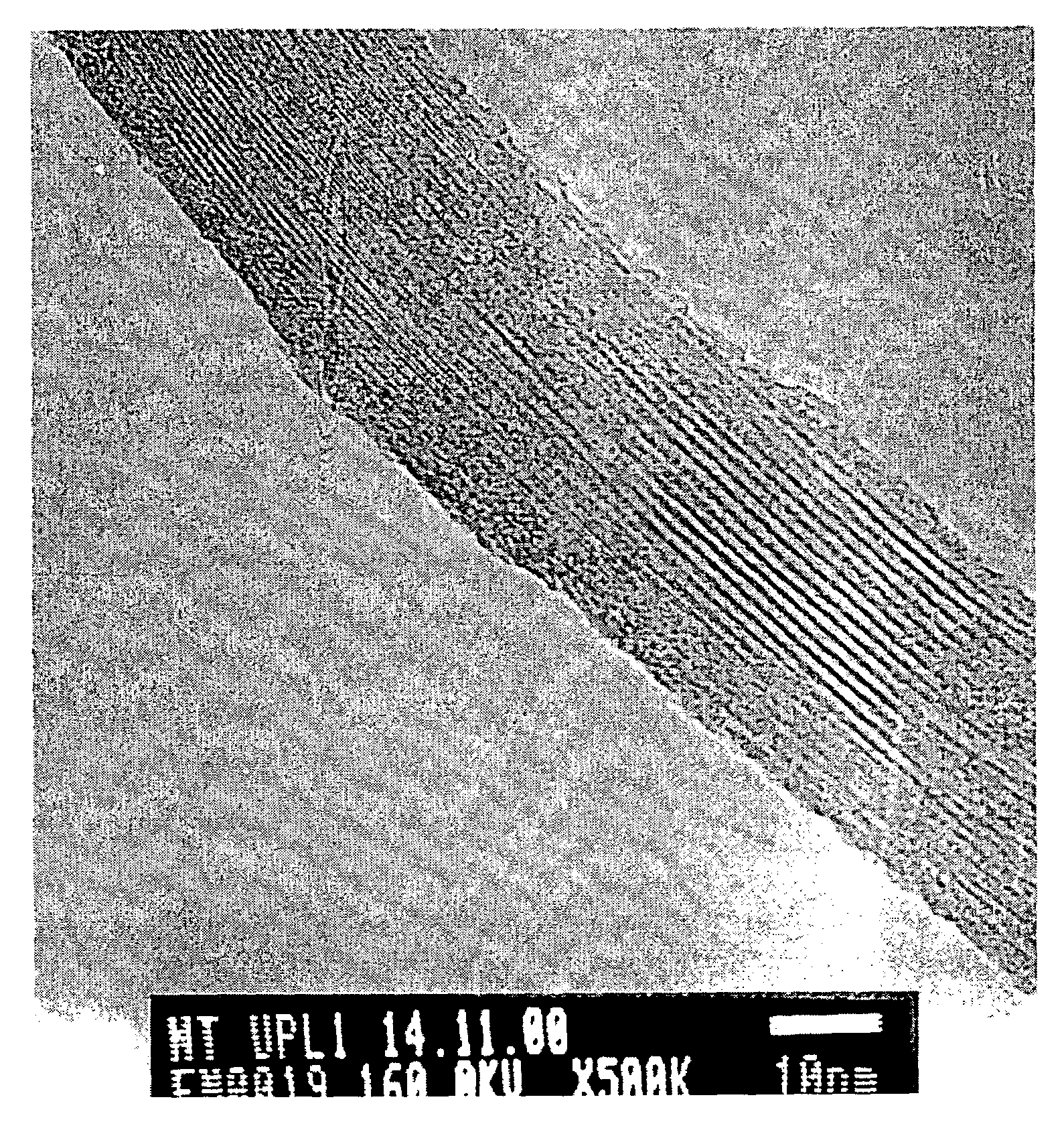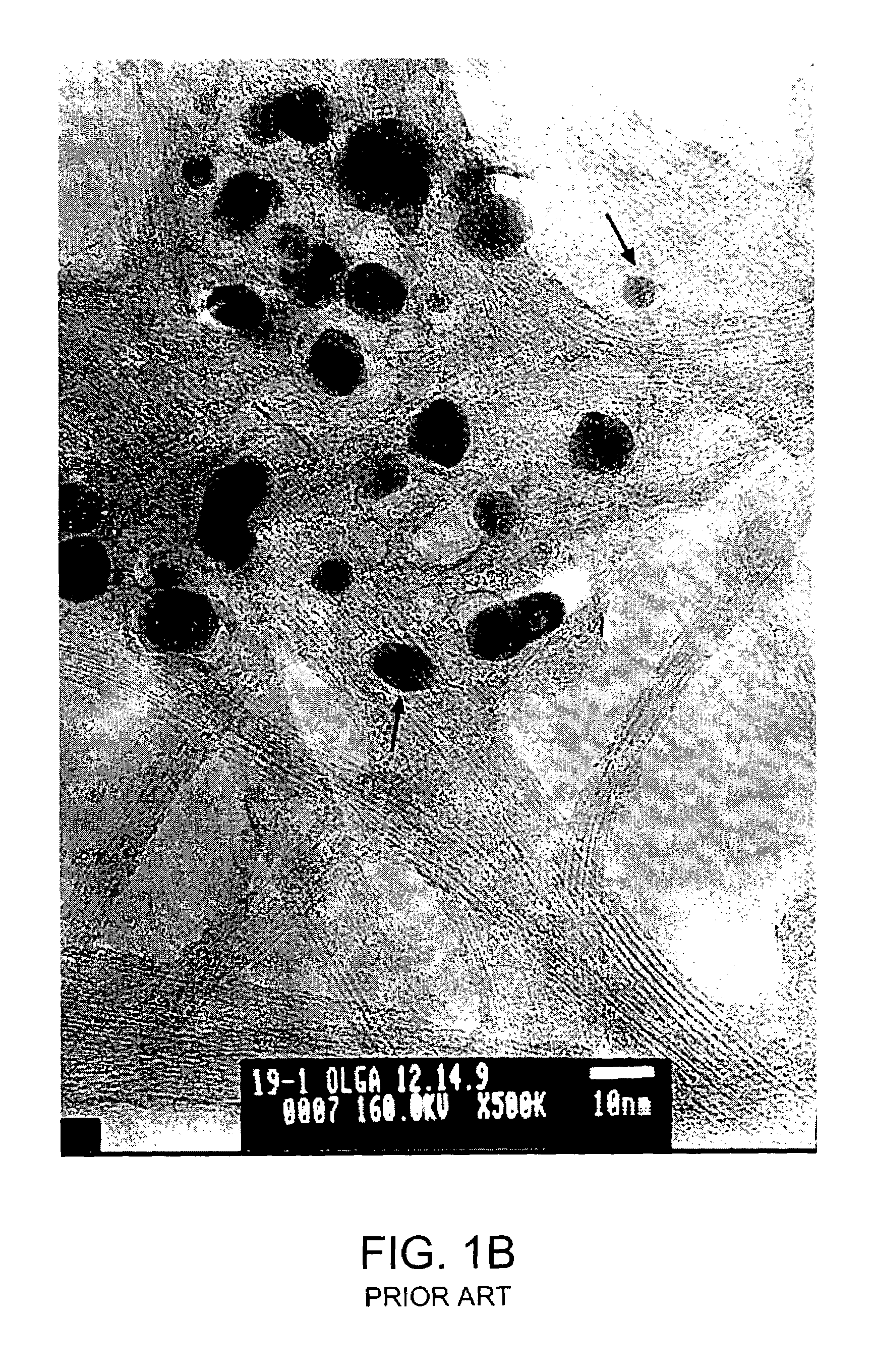Isolation and purification of single walled carbon nanotube structures
a single-walled carbon nanotube and structure technology, applied in the field of isolating and purifying single-walled carbon nanotubes, can solve the problems of poor purification method yield, limited current methods, and difficult separation of nanotube filaments formed by these manufacturing methods into individual nanotube filaments, etc., to achieve rapid and effective methods and high product yield
- Summary
- Abstract
- Description
- Claims
- Application Information
AI Technical Summary
Benefits of technology
Problems solved by technology
Method used
Image
Examples
example 1
[0040]Raw material containing bundles SWCNT structures was mixed into three synthetic detergent solutions known for solubilizing proteins and lipids in aqueous solutions. The three synthetic detergents utilized were NP-40, SDS and TX-100. These detergents were selected due to their differing physical properties and to demonstrate how the surfactant activity of the detergent affects the dispersion of SWCNT structures in solution. SDS is a strong anionic detergent that solubilizes compounds in water by virtue of coating the compounds with a layer of negatively-charged, water soluble detergent molecules. In contrast, both TX-100 and NP-40 are non-ionic detergents that function via hydrophobic interactions with the surface of a compound, thereby forming a water soluble layer of detergent molecules around the water insoluble compound. The surfactant properties (i.e., ability to decrease surface tension between aqueous and non-aqueous phases) for NP-40 are much greater than SDS and TX-100...
example 2
[0048]Aqueous solutions of each of the TA and MβC were prepared alone and with raw materials as follows. Specifically, each solution was prepared by solubilizing 1 mg of the raw material in 1 ml of ddH2O containing 50 mg / ml of either TA or MβC at 50 mg / ml. Each resultant solution was vortexed for 30 minutes at room temperature and then filtered through a 0.2 μm cellulose acetate filter. The % T values were measured for the filtrates at room temperature in sealed vials for 72 hours and compared with aqueous solutions containing only TA and MβC.
[0049]The % T values illustrated in FIG. 3 reveals that the SWCNT structures remained dispersed in the TA and MβC filtrates for the entire 72 hour period, as is evident from the relatively constant % T values measured for each filtrate over that time period. The data further indicates MβC filtrates had considerably lower % T values, correlating to a greater dispersion of SWCNT structures, than the TA filtrate and the NP-40 filtrate of FIG. 2c. ...
example 3
[0050]SWCNT structures dispersed in the TA and MβC solutions of the previous example were separated from the impurities in solution by centrifugation. Specifically, SWCNT structures sedimented out of a 1 ml volume of either solution having a liquid column height of 2.5 cm at a centrifugation speed of 10,000×g. It is noted that prior SWCNT purification techniques typically require centrifugation speeds in excess of 100,000×g to yield any sedimentation of SWCNT structures.
[0051]The TA and MβC solutions containing SWCNT structures were also subjected to TEM analysis, wherein 50 μl of each solution filtrate was deposited onto a FORMVAR® grid and the liquid was drawn through the FORMVAR® membrane by placing a clean absorbent pad beneath the grid (i.e., by capillary action). As the liquid was drawn through the grid, SWCNT structures formed on the membrane. Images of SWCNT structures were taken at locations where the structures spanned the holes in the membrane. An exemplary TEM image of t...
PUM
| Property | Measurement | Unit |
|---|---|---|
| concentrations | aaaaa | aaaaa |
| pore size | aaaaa | aaaaa |
| pore size | aaaaa | aaaaa |
Abstract
Description
Claims
Application Information
 Login to View More
Login to View More - R&D
- Intellectual Property
- Life Sciences
- Materials
- Tech Scout
- Unparalleled Data Quality
- Higher Quality Content
- 60% Fewer Hallucinations
Browse by: Latest US Patents, China's latest patents, Technical Efficacy Thesaurus, Application Domain, Technology Topic, Popular Technical Reports.
© 2025 PatSnap. All rights reserved.Legal|Privacy policy|Modern Slavery Act Transparency Statement|Sitemap|About US| Contact US: help@patsnap.com



